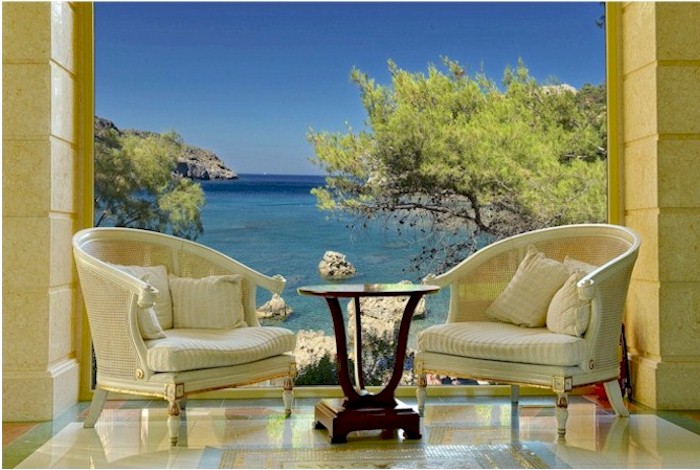
There are more than 700,000 hotels and resorts worldwide and the hotel industry is continually looking for new ways to differentiate its properties. In some cases, hotels themselves have become travel destinations and guests have come to expect the unexpected - to experience the touches that make the property unlike any other place in the world. To achieve this, architects and designers are adopting a variety of strategies to meet the needs of every type of guest and to provide incomparable customer experiences. One such strategy is site-integration - the effort to skillfully marry a hotel to its immediate surroundings. The goal is to honor the cultural location of the property, and to integrate that into the hotel's design - both inside and out. Constructing low-impact structures that blend in with the environment and incorporating local natural elements into the design are essential to this endeavor. Similarly, there is an ongoing effort to blur the lines between interior and exterior spaces - to pull the outside in - to enable guests to connect with nature and enjoy beautiful, harmonious surroundings at all times. Another design trend is personalization - taking the opportunity to make every space within the hotel original and unique. The days of matching decor and furniture in every room are gone; instead, designers are utilizing unexpected textures, mix-and-match furniture, diverse wall treatments and tiles - all to create a more personalized and fresh experience for the guest. Finally, lobbies are continuing to evolve. They are being transformed from cold, impersonal, business-like spaces into warm, inviting, living room-like spaces, meant to provide comfort and to encourage social interaction. These are a few of the current trends in the fields of hotel architecture and design that will be examined in the November issue of the Hotel Business Review.





 There are more than 700,000 hotels and resorts worldwide and the hotel industry is continually looking for new ways to differentiate its properties. In some cases, hotels themselves have become travel destinations and guests have come to expect the unexpected - to experience the touches that make the property unlike any other place in the world. To achieve this, architects and designers are adopting a variety of strategies to meet the needs of every type of guest and to provide incomparable customer experiences. One such strategy is site-integration - the effort to skillfully marry a hotel to its immediate surroundings. The goal is to honor the cultural location of the property, and to integrate that into the hotel's design - both inside and out. Constructing low-impact structures that blend in with the environment and incorporating local natural elements into the design are essential to this endeavor. Similarly, there is an ongoing effort to blur the lines between interior and exterior spaces - to pull the outside in - to enable guests to connect with nature and enjoy beautiful, harmonious surroundings at all times. Another design trend is personalization - taking the opportunity to make every space within the hotel original and unique. The days of matching decor and furniture in every room are gone; instead, designers are utilizing unexpected textures, mix-and-match furniture, diverse wall treatments and tiles - all to create a more personalized and fresh experience for the guest. Finally, lobbies are continuing to evolve. They are being transformed from cold, impersonal, business-like spaces into warm, inviting, living room-like spaces, meant to provide comfort and to encourage social interaction. These are a few of the current trends in the fields of hotel architecture and design that will be examined in the November issue of the Hotel Business Review.
There are more than 700,000 hotels and resorts worldwide and the hotel industry is continually looking for new ways to differentiate its properties. In some cases, hotels themselves have become travel destinations and guests have come to expect the unexpected - to experience the touches that make the property unlike any other place in the world. To achieve this, architects and designers are adopting a variety of strategies to meet the needs of every type of guest and to provide incomparable customer experiences. One such strategy is site-integration - the effort to skillfully marry a hotel to its immediate surroundings. The goal is to honor the cultural location of the property, and to integrate that into the hotel's design - both inside and out. Constructing low-impact structures that blend in with the environment and incorporating local natural elements into the design are essential to this endeavor. Similarly, there is an ongoing effort to blur the lines between interior and exterior spaces - to pull the outside in - to enable guests to connect with nature and enjoy beautiful, harmonious surroundings at all times. Another design trend is personalization - taking the opportunity to make every space within the hotel original and unique. The days of matching decor and furniture in every room are gone; instead, designers are utilizing unexpected textures, mix-and-match furniture, diverse wall treatments and tiles - all to create a more personalized and fresh experience for the guest. Finally, lobbies are continuing to evolve. They are being transformed from cold, impersonal, business-like spaces into warm, inviting, living room-like spaces, meant to provide comfort and to encourage social interaction. These are a few of the current trends in the fields of hotel architecture and design that will be examined in the November issue of the Hotel Business Review.
















